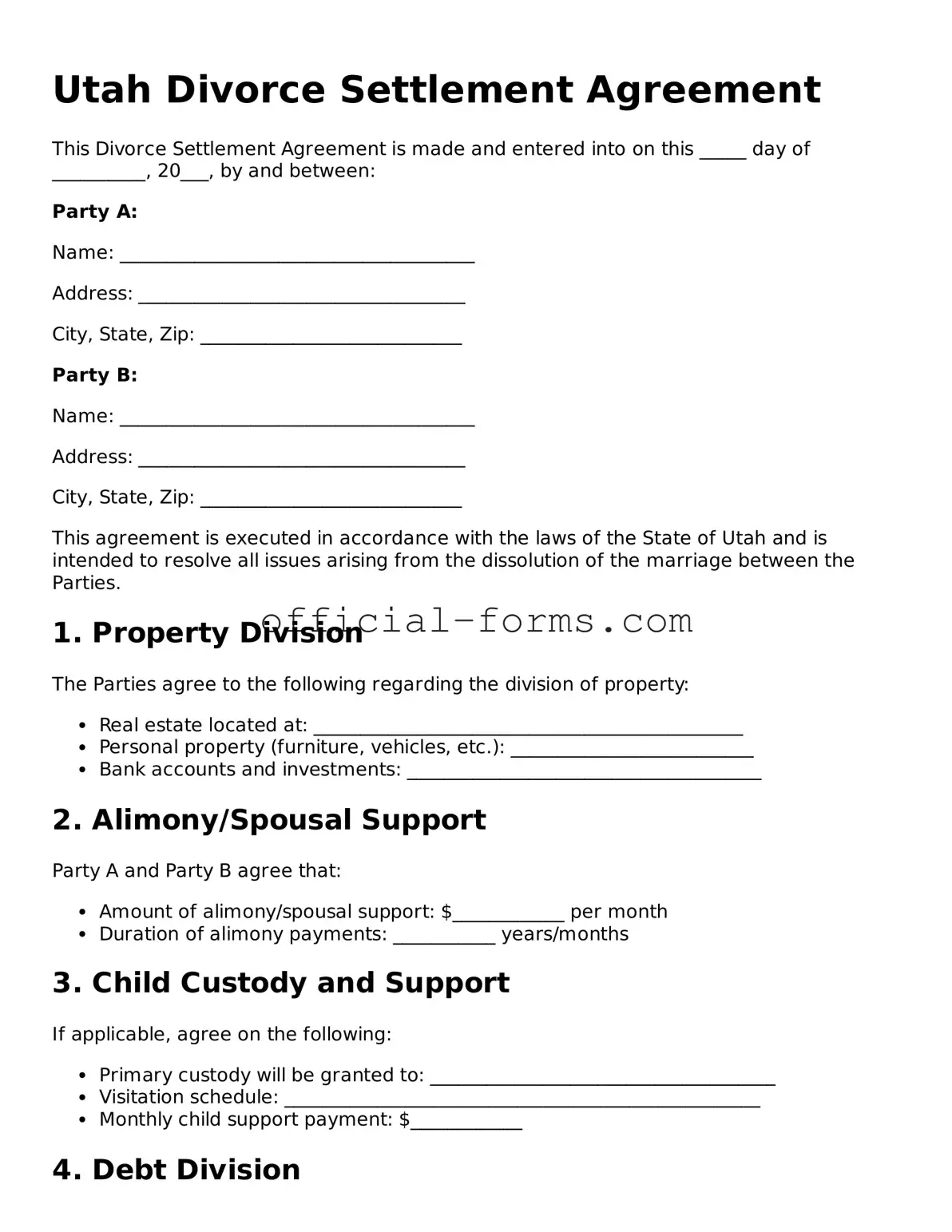Filling out the Utah Divorce Settlement Agreement form can be a complex process. Many individuals make common mistakes that can lead to delays or complications in their divorce proceedings. Understanding these pitfalls can help ensure a smoother experience.
One frequent mistake is incomplete information. It’s essential to provide all required details accurately. Leaving out crucial information, such as income or asset values, can result in the court rejecting the form or requesting additional documentation. Take the time to double-check that every section is fully addressed.
Another common error is failing to specify asset division clearly. When detailing how property and debts will be divided, ambiguity can lead to misunderstandings later on. Each item should be clearly listed, including who will be responsible for certain debts. This clarity helps prevent disputes in the future.
People often overlook child support calculations as well. It’s important to use the state guidelines to determine appropriate support amounts. Not doing so can result in unfair financial burdens on one parent or inadequate support for the children. Utilizing the state’s online calculators can help ensure accuracy.
Another mistake involves neglecting to consider tax implications. Many individuals do not think about how asset division will affect their tax situation. For example, transferring certain assets can have tax consequences that may not be immediately apparent. Consulting a financial advisor can provide valuable insights.
Additionally, some individuals forget to review the agreement with legal counsel. Even if both parties agree on terms, having a legal expert review the settlement can help identify potential issues. This step can safeguard against future disputes and ensure that the agreement complies with state laws.
People also commonly make the mistake of not keeping copies of the completed form. After submitting the Divorce Settlement Agreement, it’s crucial to retain a copy for personal records. This ensures that both parties have access to the terms agreed upon, which can be useful if any questions arise later.
Finally, missing deadlines can create significant complications. Each step in the divorce process has specific timelines that must be adhered to. Failing to submit the form on time can delay proceedings and potentially affect the outcome of the divorce. Staying organized and aware of deadlines is essential for a smooth process.
By being mindful of these common mistakes, individuals can navigate the Utah Divorce Settlement Agreement form more effectively. Taking the time to review and understand each requirement can lead to a more favorable outcome for all parties involved.
